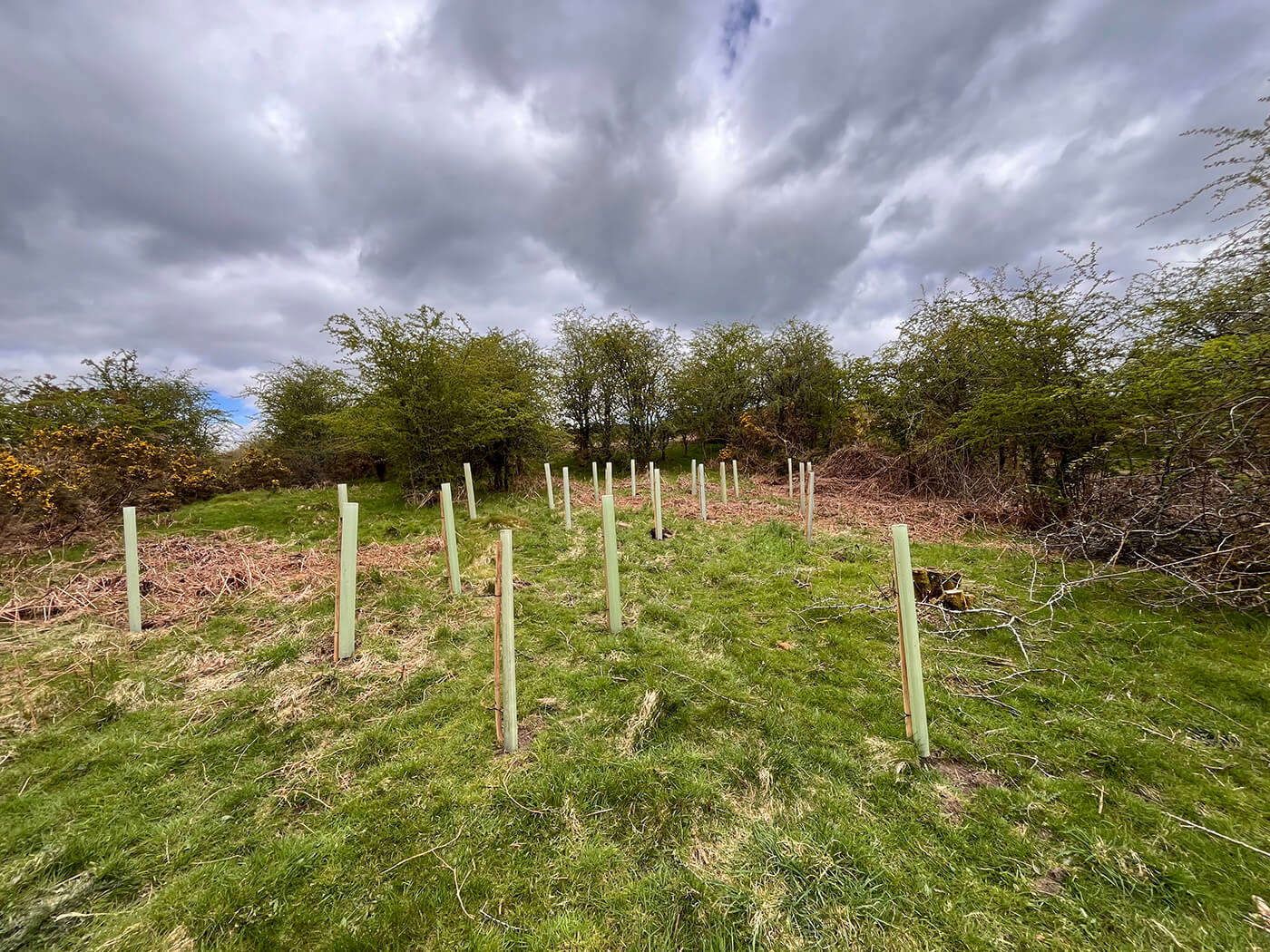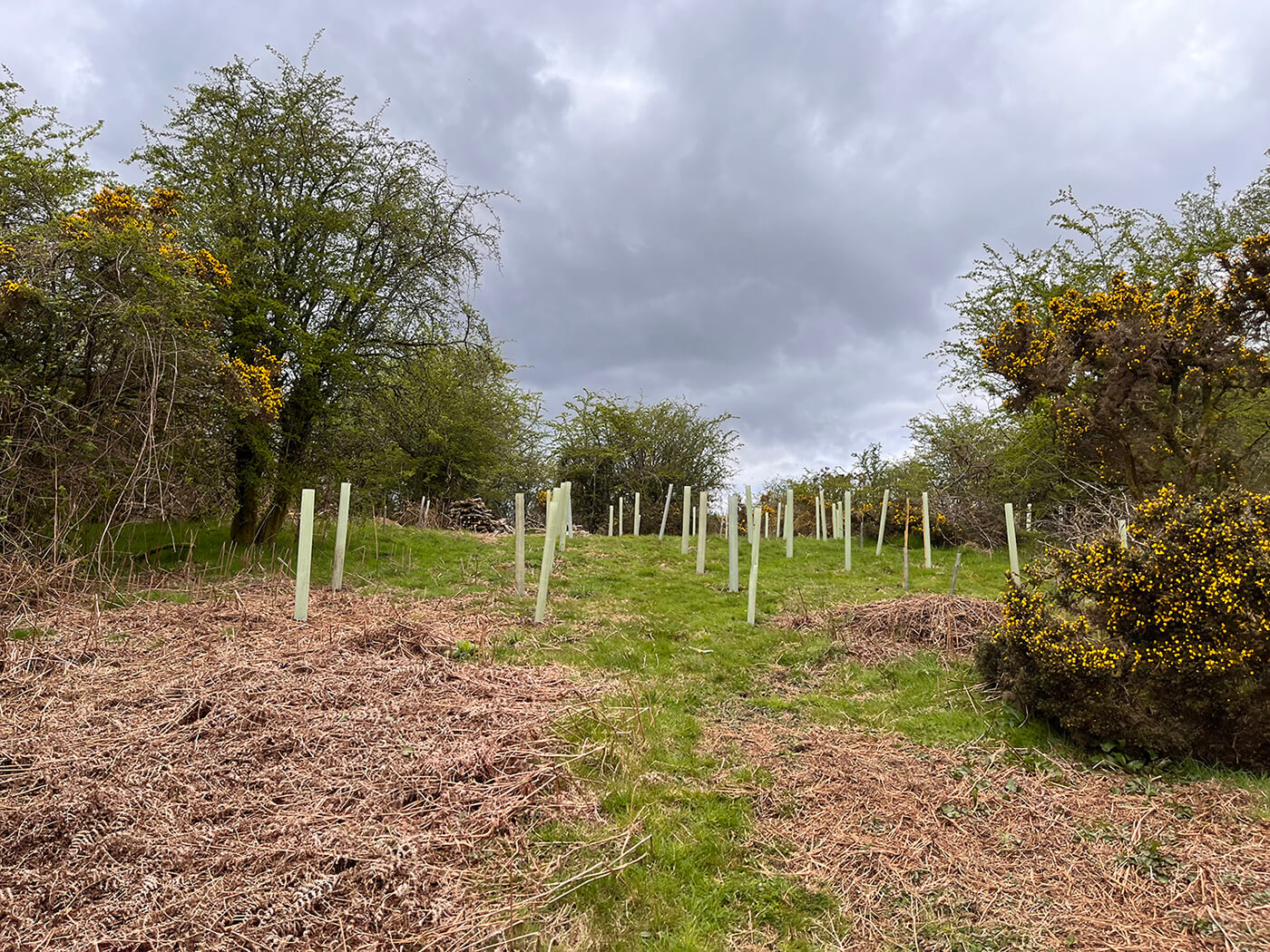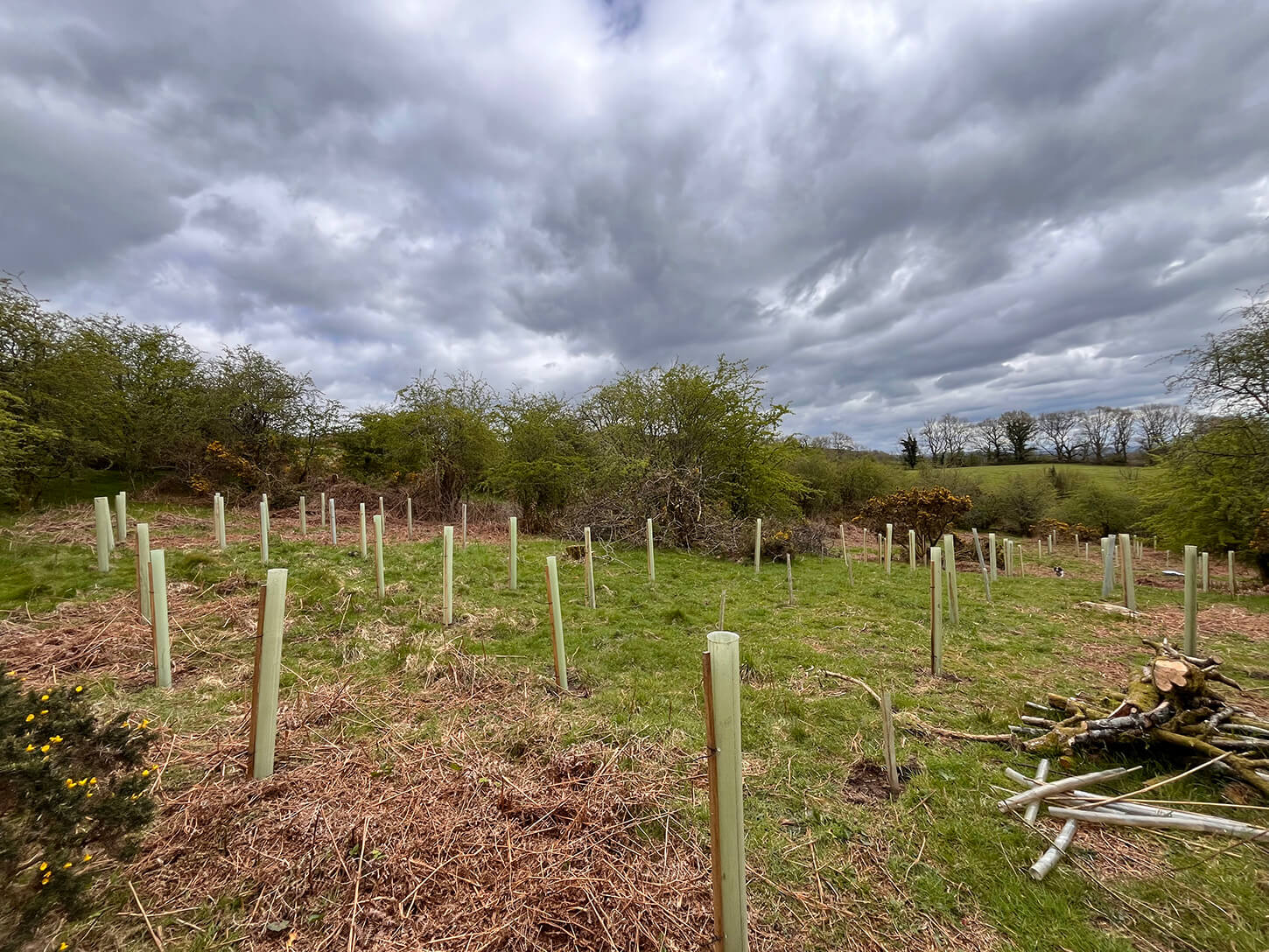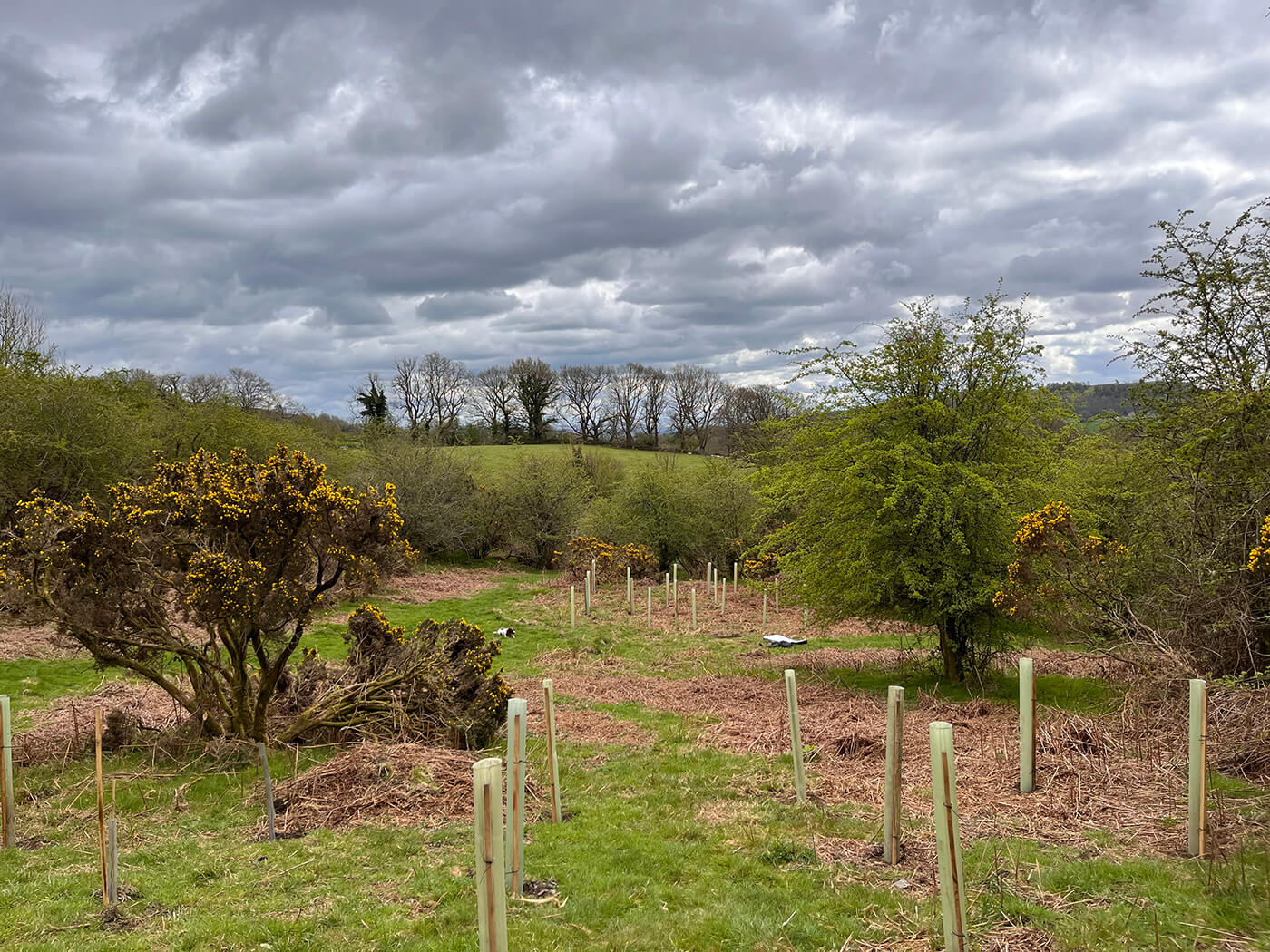Willmott Dixon supported the planting of 7,500 climate resilient trees across the UK in 2023-24
Willmott Dixon is working in partnership with GreenTheUK and the Royal Forestry Society (RFS) to plant new climate resilient trees across UK woodlands. This project focuses on excellence in woodland management, working with foresters and aborists to ensure we are planting for the future with knowledge being shared from one generation to another.
Planting for the future means nurturing skills that will protect woodlands from pests, diseases and improve resilience to climate change. 41% of England’s woodlands are unmanaged or under-managed, which poses threats to the health and sustainability of woodlands. Willmott Dixon is helping to support tree planting rooted in knowledge of UK woodlands, looked after by experts.
The Committee on Climate Change recommends woodland cover is increased to a minimum of 17% by 2050, requiring 30,000 to 50,000 hectares a year of woodland creation. This will store carbon, increase biodiversity, flood control and create a low-carbon route to increassing the resilience of the rural economy.
This planting season, 2023-24, the UK has seen 11 named storms, according to the met office highlighting the need to act each planting season to protect and restore UK woodlands.
This year, Willmott Dixon has planted 7,500 climate resilient trees in the UK to help take climate action. Next planting season, Willmott Dixon will plant another 7,500 trees to help meet their target of planting 100,000 trees by 2030.
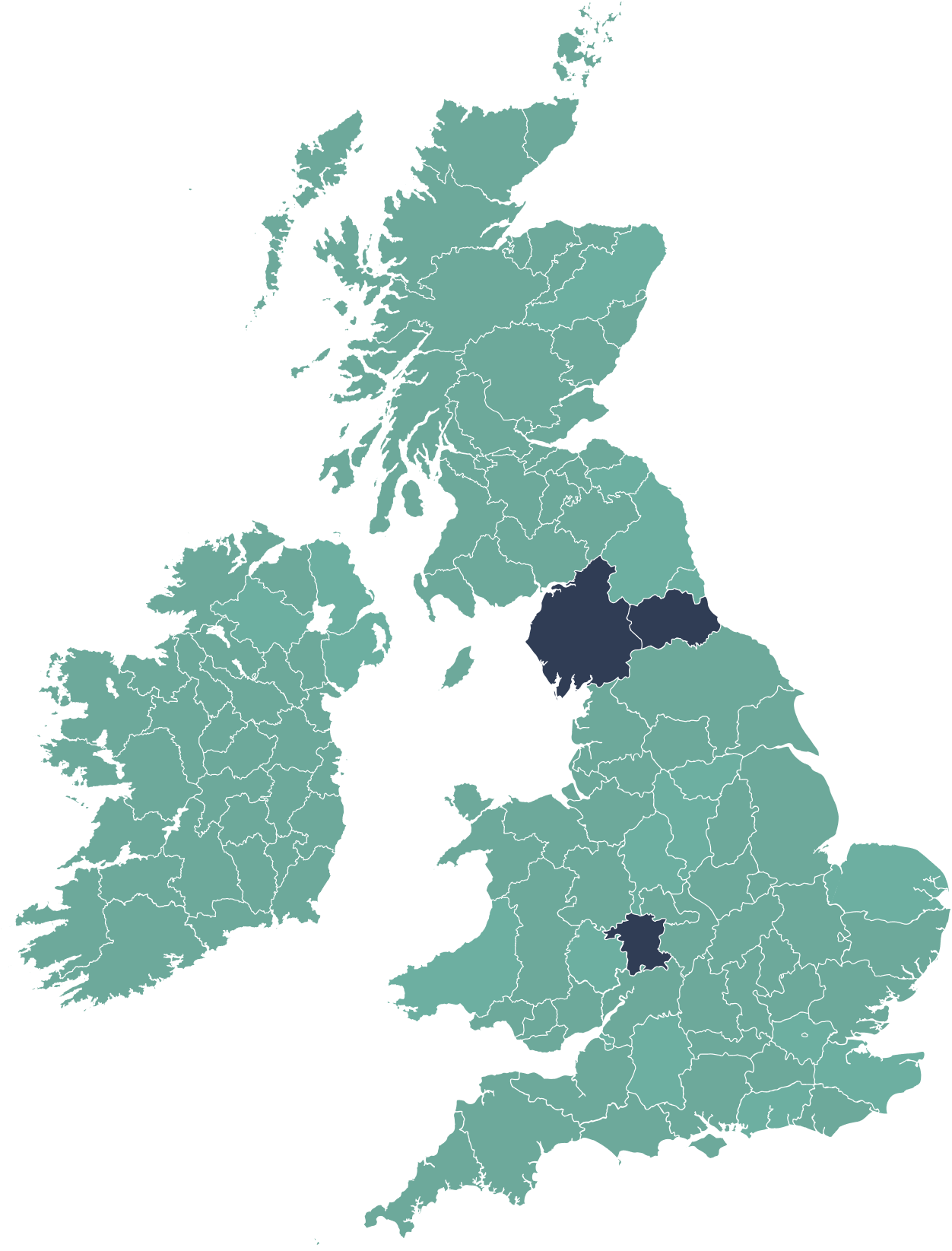
Tree Species Planted:
4,117 trees planted in County Durham
This woodland was badly affected by Storm Arwen and many trees were destroyed. The trees that were lost in the storm have been replaced with a mix of broadleaf and conifer species. These trees were planted in a pattern designed specifically so that slower growing trees will be sheltered by faster growing trees as they establish themselves. By planting the trees in this way, all the trees in the woodland will support each other. This will help the woodland to become more resilient to the more frequent storms and gales that we are likely to see in the future, due to climate change.
250 trees planted in Worcestershire
Trees on this site have been planted to improve the landscape and amenity value of local football and cricket pitches. Apple, pear, field maple and oak trees have been planted to provide shade and a windbreak at the edges of the sports fields. The flowers and fruit on the apple and pear trees will greatly benefit local wildlife and these new wooded areas will be open to the public for walks and relaxation.
2,733 trees planted in Cumbria
Many of the trees in this important ancient woodland were broken, damaged or blown over by Storm Arwen. The new trees in this woodland have been planted to help increase the woodland’s resilience to storm damage and quickly replace the woodland habitat that was lost in the storm. This is a particularly important site for native red squirrels, who live and breed in this woodland. The trees have been specially chosen to ensure a continued supply of pinecones (one of the squirrels’ favourite foods) and suitable habitat for building nests (dreys).
400 trees planted in Cumbria
In this hawthorn dominated woodland, trees are being planted to benefit wildlife and improve the area for foraging. By coppicing the current hawthorn, more light reaches the ground encouraging more grass and flower species. Newly planted, fast growing birch trees will add height diversity to the woodland and hazel trees will develop future coppice poles. This site will create a multi-aged, diverse woodland. The coppiced products will also be available to, and benefit, the local Scout group who use the woodland. Small leaf lime and elder have also been chosen for their pollinating flowers and for foraging purposes.

UN's Sustainable Development Goals
As a GreenTheUK partner, you support projects that are in line with the UN Sustainable Development Goals.

Take urgent action to combat climate change and its impacts.

Sustainably manage forests, combat desertification, halt and reverse land degradation, halt biodiversity loss.









































































.jpeg)
.jpeg)
.jpeg)
.jpeg)
.jpg)
.jpg)
.jpg)
.jpg)
.jpg)
.jpg)
.jpg)
.jpg)
.jpg)
.jpg)
.jpg)
.jpg)
.jpg)
.jpg)
.jpg)
.jpg)
.jpg)
.jpg)
.jpg)
.jpg)
.jpg)
.jpg)
